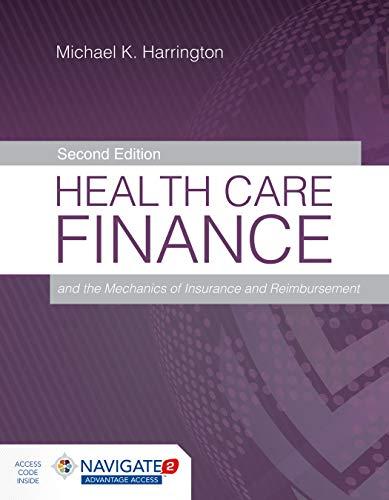Answered step by step
Verified Expert Solution
Question
1 Approved Answer
a ) Loan Amount and Interest: We can't directly calculate the loan amount and interest separately with the given information. We need either the initial
a Loan Amount and Interest:
We can't directly calculate the loan amount and interest separately with the given information. We need either the initial loan amount or the interest rate for a specific period eg annual interest
However, we know the total amount Stella paid back $ which includes both the principal loan amount and the accumulated interest over two years.
b Equivalent Monthly Compounding Rate:
To find the equivalent monthly compounded rate that results in the same accumulated debt, we can use the following formula:
rm r n
where:
rm monthly interest rate
r semiannual interest rate
n number of compounding periods per year for semiannual
rm
c Time to Reach $ with No Payments:
This requires calculating the future value FV of the loan at compounded semiannually when the FV reaches $ You can use financial calculators or spreadsheet functions like FV
Steps:
Set FV $
Set interest rate IY
Set number of compounding periods N to an initial guess eg N for years
Adjust N until the calculated FV is close to $
This might take some trial and error, but the answer will be approximately:
Time: years and months around months
d Local Bank Interest Rate:
Similar to part c we can use the FV function to find the interest rate that makes the loan reach $ in years compounding periods with semiannual compounding.
Steps:
Set FV $
Set number of compounding periods N
Set present value PV to the initial loan amount unknown
Solve for interest rate IY using trial and error.
The answer will be the interest rate charged by the local bank around compounded semiannually
e Loan Amount with Split Payments:
This requires working backwards. We can calculate the future value FV at the end of year and year considering the initial loan amount unknown and the semiannual interest rate. Then, subtract the planned payments $ in year and $ in year to find the remaining balance at the end of year This remaining balance must be zero for a complete payoff.
Steps:
Let P be the initial loan amount.
Calculate FV at the end of year using FV formula considering semiannual interest
Subtract the $ payment from the year FV
Calculate FV at the end of year using the remaining balance from step and considering semiannual interest.
Subtract the $ payment from the year FV
Set this final balance to zero and solve for P the initial loan amount
f Loan with Split Interest Rates:
This is the most complex scenario. It requires calculating the future value FV at the end of year considering the following:
Year : Interest rate of compounded semiannually compounding periods
Year : Interest rate of compounded quarterly compounding periods
Steps:
Let P be the initial loan amount.
Calculate FV at the end of year using FV formula considering compounded semiannually for periods
Use this year FV as the starting balance for year
Calculate FV at the end of year using FV formula considering compounded quarterly for periods
Set the final FV to $ and solve for P the initial loan amount
Note: Solving these equations might require using financial calculators or spreadsheet functions.
Step by Step Solution
There are 3 Steps involved in it
Step: 1

Get Instant Access to Expert-Tailored Solutions
See step-by-step solutions with expert insights and AI powered tools for academic success
Step: 2

Step: 3

Ace Your Homework with AI
Get the answers you need in no time with our AI-driven, step-by-step assistance
Get Started


